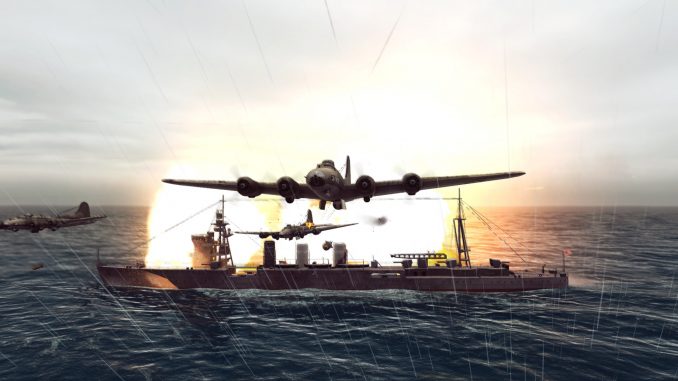
Fleet Building
So, you want to be a Carrier Main?
Well, Carriers are a joy to use and a joy to abuse (others) when used correctly. They can absolutely dominate the battlefield when used with care and as such they are entirely worthy of being called flagships and capital ships.
However, unlike their more traditional Battleship counterpart who loves to get into firing range and tear the opponent to shreds bit by bit (Nice armour you got there, shame my 18′ shell just broke it) the Carrier wants nothing to do with it. In fact, if played correctly the ideal situation is your Carrier never even sees AA fire let alone ship to ship fire.
Because of this standoffish nature, when assembling a fleet for your Carrier you need to drop the notions of a traditional battlegroup. You aren’t trying to overwhelm the opponent with raw firepower, that’s what a Battleship is for, so you don’t build a fleet designed to do that.
No, what you need is a Defensive Operations fleet. This fleet type has three general requirements:
1. RED FLEETS GO FASTA! Carriers are quick, so you don’t want your escorts to slow you down. If it isn’t capable of doing 30 knots or more it probably shouldn’t be there as you want to be able to outpace enemy Battleship and Submarine fleets on the global map to keep your Carrier out of gun reach.
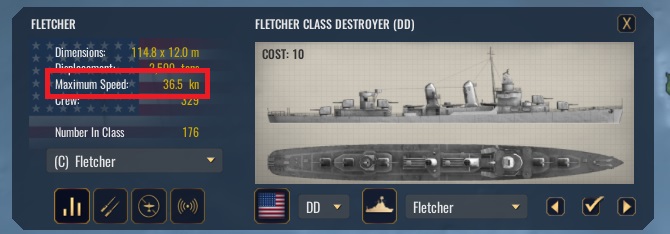
2. I ‘AV ALL DA SKY DAKKA! The biggest threat to Carriers is aircraft (funny that) and as such you will NEED to be prepared for this problem. The more anti-aircraft fire you can shove into your fleet, the better. In particular, keep an eye out for ships with dual purpose guns or multiple overlapping fields of AA fire as these will be more useful. You aren’t going to wipe out the attacking planes, but even a few less can have major impacts.

3. I WANT ALL DA BARREL BOMBS LADZ! Submarines are sneaky little gits and sometimes they are just going to pop up if you aren’t careful or they come from a weird angle. (WHY ARE YOU LOITERING OUTSIDE MY MAIN BASE YOU DAMN GATO!?!?!?) As such, when they do show up you’ll want to be able to quickly and efficiently turn them into an artificial reef.
So make sure that some of your ships are capable of doing this job well.
Combining these three needs into a fleet is usually quite achievable, especially if you make use of ships which cover multiple categories. I will take this moment to point out in particular the IJN Akizuki Class DD, the USN Fletcher Class DD and the USN Atlanta class CL as the three top runners for support vessels within in your Carrier fleets.
As a final note, keep in mind that your ideal goal is to not actually fight anyone with your carrier group directly. So you can get away with being a bit skimpy if you’re careful. I tend to find that the 1 CV, 1-2 CL’s and 2-3 DD’s are enough to get the job done. Below is an example of a well fleshed out Carrier group for the USN.
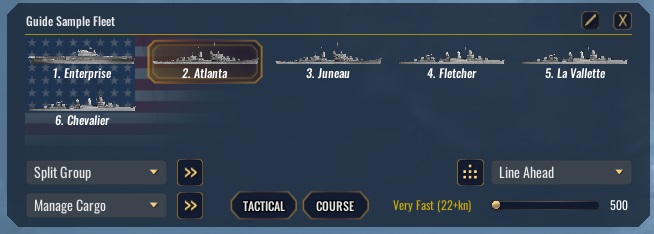
Carrier Fleet Positioning
So now that we have an idea of what our Carrier fleet should look like for its composition, lets discuss where our fleet should be. This section will be smaller than the last one I promise.
First things first, Carrier fleets don’t want a fair fight. You want to be able to strike your enemy and run, and that is something which you can do very effectively with your long reach. Carrier based aircraft tend to have a range of at least 500-650km and can traverse this in a matter of in-game hours.
For reference, this is the strike range of the SBD Dauntless from the USN to give an idea of actually how long the attack range is.
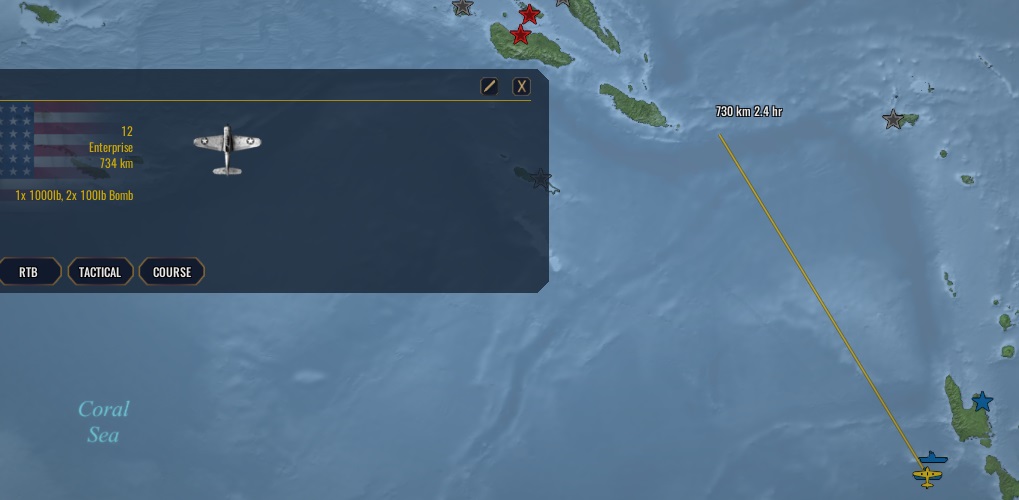
The exact distance for each aircraft can be seen in their Endurance stat, such as in the example below.
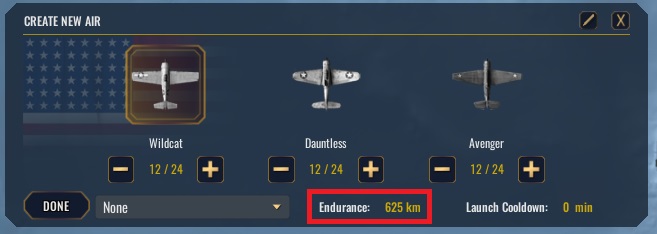
With this in mind, you can happily maintain a safe distance of 300-400km from any potential threat and through the use of spotting (we will discuss this later) you should be able to avoid any confrontations whilst continuing to strike your foe with impunity.
One thing to note is that you cannot launch planes between 1700-0500hrs. This means that once you get past the 1700hr mark it is not a bad idea to pull your carrier fleet an extra 100-200km as you will not be able to defend yourself as well.
Getting your Aircraft Airborne
The interface for WotS is admittedly not the most intuitive and therefore I can understand why some players don’t realise how to get their aircraft in the air. So lets get onto the explanation and the reason why this guide was made.
Step 1: Own a carrier. Duh.
Step 2: Select your Carrier fleet.
Step 3: Select the bottom left drop down menu and choose the “Launch Aircraft” option.
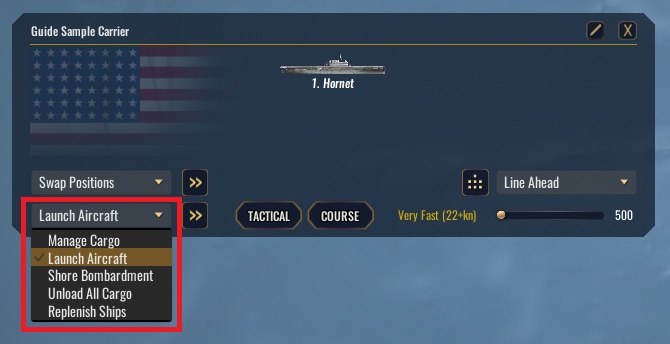
Step 4: Select your Carrier and then hit the button next to the “Launch Aircraft” menu.
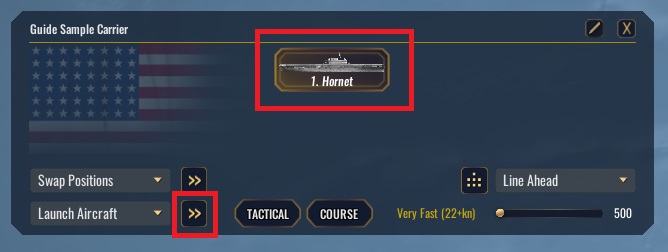
Step 5: This takes you to the “Create New Air” menu. Select the type of aircraft you wish to send out, and specify the number you wish to send in the group. (Between 1-12) In the drop down menu you can also choose the ordnance the aircraft is using. Once you’ve setup the group you want, hit “Done.”
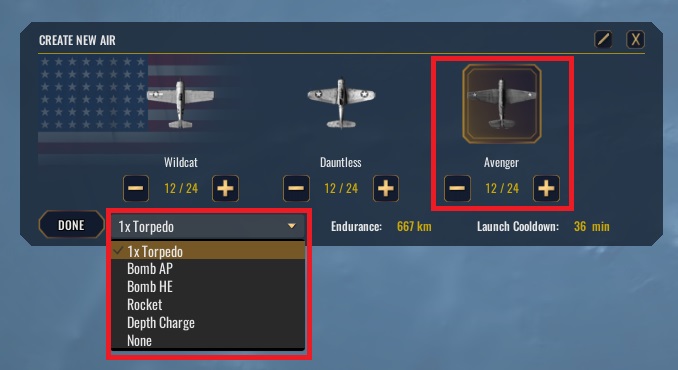
Step 6: Now you can control your squadron by selecting it. “RTB” = Return to Base, which orders the planes to return to their point of origin. “Course” lets you change course as normal. “Tactical” also does the same as normal and takes you into battle mode with local units, which will be your primary way of using strike craft.
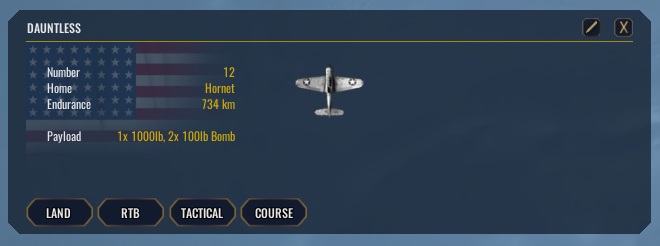
Step 7: Sometimes aircraft will get a combat initiation trigger against enemy fleets but this is not always the case. With this in mind, make good use of the “Tactical” button to get your strikers on target as needed.
Operating Aircraft
First let’s take a quick look at the different aircraft that Carriers can operate:
1. The Japanese Zero / American Wildcat are the Carrier Fighters found in WotS. They are fast, agile and armed with machine guns capable of gunning down other aircraft or strafing surface targets at low altitude.
2. The Japanese Val / American Dauntless are the Carrier Dive Bombers found in WotS. While not as fast as their fighter counterparts, they still can maintain a quick pace. Each has a rear gunner which can tickle enemy fighters and a payload of bombs for hitting surface targets.
3. The Japanese Kate / American Avenger are the Carrier Multi-Role Bombers found in WotS. Slower than the others, they are the most offensively oriented when ti comes to anti-shipping gear and can equip a variety of payloads.
And now for a more in-depth look:
The A6M2 “Zero”:
As a fighter, you’ll find yourself using the Zero in one of three ways. Scouting is the most common, as information wins wars. Sending groups of 2-4 Zeroes out regularly to scout is necessary to track targets and maintain safety around your Carrier. Intercepting incoming bombers is an extension of this role and should be prioritised when possible. Finally, a wing of 12 fighters can be scrambled should an enemy bomber wing make it to your carrier, so always try to keep at least 6-12 fighters on deck in case of emergency. To do this, select the fleet before hitting “Begin” and follow the instructions from Section 3 of this guide.
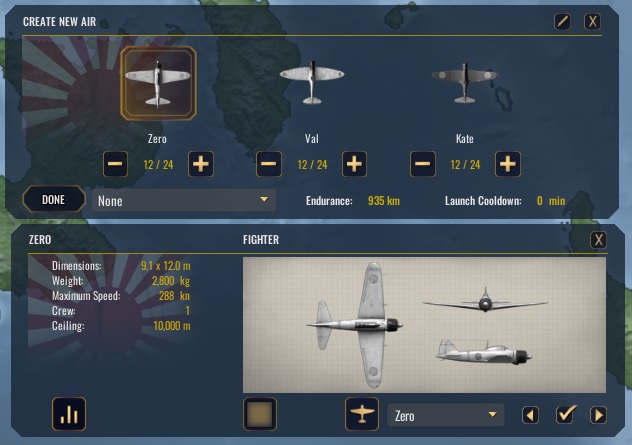
The Aichi D3A “Val”:
Unsurprisingly, these Dive bombers are meant for one job and good at that one job. Have them climb to 1,000m at the start of an engagement, pick your target and give it the good news with some good old fashioned bombs straight through the deck. This is effective vs any class of Surface Vessel, even Submarines should they hit. Keep in mind however the relative short range of the aircraft type, meaning you should hold these craft in reserve until you have found a target for them.
When hitting a target from directly ahead/behind, set your squadron to the Line Ahead formation. When going at a target from the side, I recommend the Vic formation.
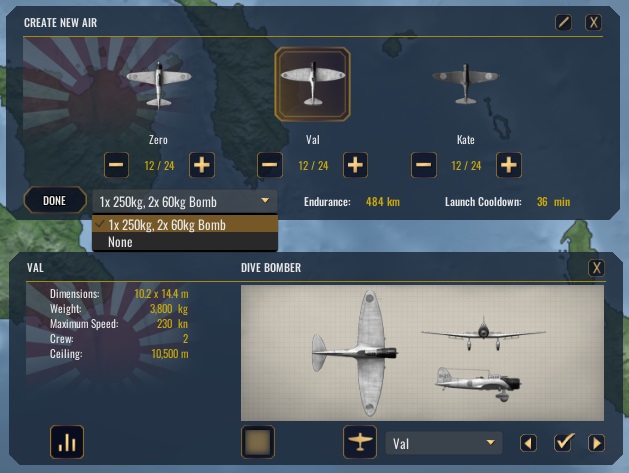
The B5N2 “Kate”:
Slower but not necessarily sturdier, the Kate rewards high risk high reward. Her torpedoes require you to get low and slow in order to deploy but will devastate warships if multiple of these aircraft succeed in landing their hits. Alternatively, you may attach bombs to the aircraft and instead attempt to land heavier hits than the Val can muster from the relative safety of higher altitudes.
When torpedo bombing, I recommend getting your Kate’s into groups of 3 in the line abreast formation. This will have the best effect. When doing high altitude bombing, Vic formation should be sufficient.
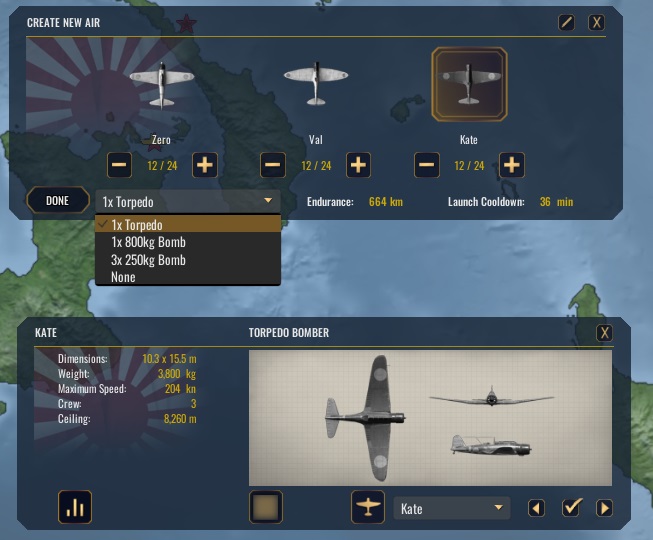
The F4F Wildcat:
The Wildcat mimics the Zero with it’s role within the Carrier fleet. First, it’s obviously your fighters and meant for taking down enemy aircraft. Second, it’s a quick reaction force for if the carrier is attacked by enemy aircraft. And thirdly, it can act as a scout, although it’s range is inferior to the Zero by 310km. However it trades this inferior range for much better armour, meaning it can survive IJN AA considerably better.
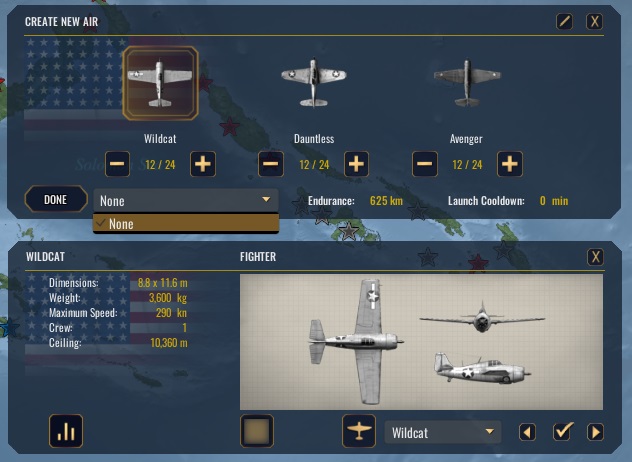
The SBD Dauntless:
The premier scout for the USN and their Dive bomber, the Dauntless will take you places. Send these out in flights of 4 for scouting missions or wings of 12 to devastate enemy shipping, especially Cruiser class vessels. Of special note, the Dauntless is considerably tougher than the Val and in combination with the weak IJN AA can survive a lot more time over an enemy fleet than their Japanese counterparts.
When hitting a target from directly ahead/behind, set your squadron to the Line Ahead formation. When going at a target from the side, I recommend the Vic formation.
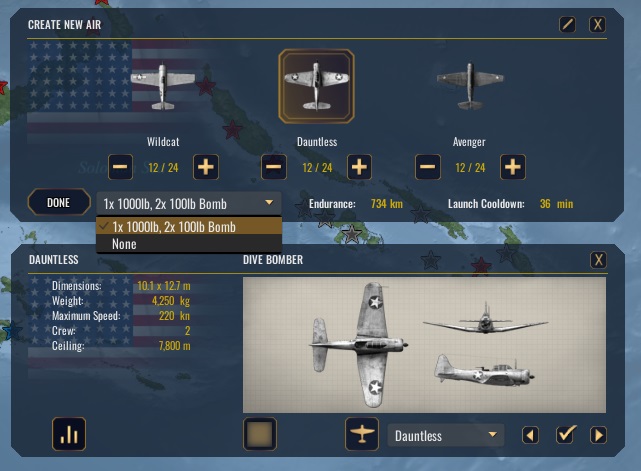
The TBF Avenger:
The toolbox bomber of this game, the Avenger has a large variety of payload options that allow it to be effective at, well, any type of anti-surface warfare. Her torpedoes can be very dangerous against enemy shipping, however they are usually duds so if you have dud torpedoes on be ready to cry. Her AP bombs will give Battleships headaches, her HE bombs will make Destroyers wish you’d sent Dauntlesses instead, her Rockets will let you know where the enemy isn’t by all the splashes they’ll leave behind and the Depth Charges will make Submarines hate your soul.
Trial and error will be needed with this, but as some basic pointers, the torpedoes are great if you have duds turned off and pointless if you don’t. The bombs work as well as bombs should but you will probably get more consistency from the Duantlesses. Rockets are having a weird time atm with accuracy but are nasty if they hit. Depth Charges are amazing as long as you have the Submarine spotted. They will even deal some damage (limited) to Submarines on the surface so go ham with them.

Misc Other Information
1. Aircraft will remain airborne for their full distance allowance even after 1700, so launching as many aircraft as you can just before 1700 is a wise idea. An extra 2 hours of air cover makes the night seem just that little bit brighter for your future.
2. Carriers need an in-game hour after launching a squadron before they can launch another squadron, so if you want to launch large strikes you may need to stagger your attacks or have one squadron wait for the other. If the latter, keep in mind that the effective distance of your squadron will be reduced.
3. Only 24 friendly aircraft can be in a battle at a time, so if you want to use all 24 strike craft make sure to pull back friendly fighters and spotter craft ahead of time to let your bombers bring the rain.
4. If your Carrier fleet is being attacked by a surface fleet or Submarine directly, you can select the Carrier fleet and launch a squadron (up to 12 planes) at the last second before hitting begin. This squadron will spawn at low altitude almost directly above the Carrier in the battle.
5. Aircraft returning to base can still take part in a fight if you time it right by using the “Tactical” button.
This is all about War on the Sea – A Basic Guide to Operating Carriers.; I hope you enjoy reading the Guide! If you feel like we should add more information or we forget/mistake, please let us know via commenting below, and thanks! See you soon!
- All War on the Sea Posts List


Leave a Reply